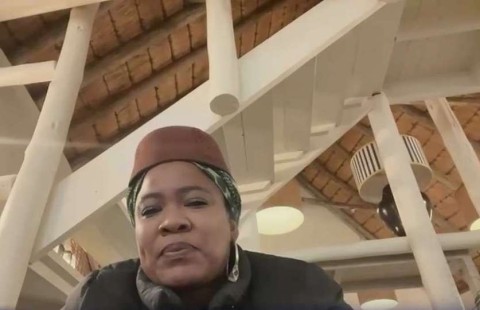“`html
Table of Contents
Across The United States, a important shift is underway in how correctional facilities address the unique healthcare needs of incarcerated women. With the number of women in the criminal justice system increasing, innovative approaches are essential to foster healthier and more rehabilitative environments. These changes prioritize trauma-informed design, technological integration, and gender-responsive policies.
The Council On Criminal Justice and the Prison policy Initiative (PPI) reported in 2024 a 41% increase in women’s involvement with the criminal justice system over recent decades. Approximately 77,000 women are currently held in U.S. correctional facilities. This increase underscores the urgent need for tailored policies and facility designs that address the specific challenges faced by this population.
Historically, correctional facilities designed with a gender-neutral approach have proven inadequate. Many incarcerated women, a significant portion of whom are mothers and often single parents, are housed in aging facilities lacking necessary amenities and healthcare considerations.
Did You Know? According To A 2023 Study By The Pew Research Center, Incarcerated Mothers Are More Likely Than Incarcerated Fathers To Have Been The Primary Caregivers Of Their Children Prior To Incarceration.
The Prison Rape Elimination act of 2003 (PREA) highlights the pervasive issue of sexual violence among justice-involved women. Over 86% have experienced sexual violence, leading to complex reproductive and mental health needs. Current correctional policies often fail to provide trauma-informed care, with practices like shackling and strip searches exacerbating existing trauma.
Limited Access To Healthcare remains a critical issue. Conventional infirmaries and external hospital transports offer restricted care options, straining facility staffing.The move toward modern, humane, and gender-responsive design elements aims to transform this reality.
Modern correctional facilities are focusing on creating environments that foster rehabilitation and well-being. These designs account for varying custody levels and incorporate specialized spaces for women with serious mental illnesses (SMI), major medical needs, and substance use disorders. Prioritizing the stabilization of women at high risk is paramount, with designs that promote normalcy and enhance livability.
Key Design
The evolution of reflects a growing recognition of the unique needs and vulnerabilities of incarcerated women. This shift emphasizes , mental health support, and opportunities for accomplished reintegration into society. This article delves into the innovative being implemented and the transforming the landscape of women’s facilities, exploring how we can address the core challenges in women’s post-incarceration journeys.
Women frequently enough enter the correctional system with different experiences and challenges than men, thus, specialized are crucial for effective rehabilitation. These must address the root causes of offending, including a history of trauma, substance abuse, and lack of education.
A notable number of incarcerated women have experienced past trauma, a factor that often contributes to criminal behavior. Effective is key. This approach helps women understand the impact of trauma and develop coping mechanisms. mental health services, including counseling and therapy, are essential. Evidence-based alongside can lead to improved outcomes.
Substance use disorders are common among incarcerated women, and effective drastically improves the likelihood of successful reentry. These programs should offer detox services, counseling, and support groups. Aftercare planning, including access to support networks in the community like 12-step programs and sober living facilities, is also vital.
Lack of education and job skills is a significant barrier to successful reintegration. Offering educational opportunities such as GED programs, vocational training (e.g., culinary arts, cosmetology), and college courses provides women with the skills for employment. These are linked to reduced reoffending and improved quality of life. Consider ,or offer .
Technology is playing a transformative role in women’s corrections, improving safety, efficiency, and the delivery of services. From improved security to enhanced access to resources, the integration of technology offers manny benefits.The benefits of these technologies make for a
, including advanced cameras and monitoring systems increases safety for both staff and inmates. This can definitely help prevent violence and other incidents. Effective are essential for a secure facility. Use of for staff can improve accountability.
offers significant advantages in women’s prisons, particularly in providing access to medical and mental health services. It helps overcome geographical barriers and staffing shortages, delivering critical care.Using becomes increasingly important.
Many facilities now use technology to offer educational and rehabilitative programs. These programs include online learning platforms, virtual reality simulations for skills training, and access to digital libraries. Online educational resources and digital learning platforms empower inmates.
Several facilities are leading the way in transforming women’s corrections. For example,a facility in [Insert US State Here] implemented a trauma-informed care program combined with vocational training,resulting in a significant drop in recidivism rates. Another facility saw improvements in mental health outcomes with integrated telehealth solutions. (Note: Always cite real-world examples with verifiable data.)
The adoption of these approaches can lead to numerous advantages:
| Area of Betterment | Benefit |
|---|---|
| reduced Recidivism | More women successfully re-enter society and become productive citizens. |
| Mental Health | Improved well-being and coping skills. |
| Safety | A safer habitat for both staff and inmates. |
Practical Tips and Future Considerations
Adopting the latest advancements in women’s corrections requires careful planning.
the future of women’s corrections looks at individualized treatment,continued technological advances,and stronger community partnerships. The ultimate goal remains to provide effective rehabilitation, promote public safety, and also supporting women’s individual journeys.

Alexandra Hartman
Editor-in-Chief Prize-winning journalist with over 20 years of international news experience. Alexandra leads the editorial team, ensuring every story meets the highest standards of accuracy and journalistic integrity.













